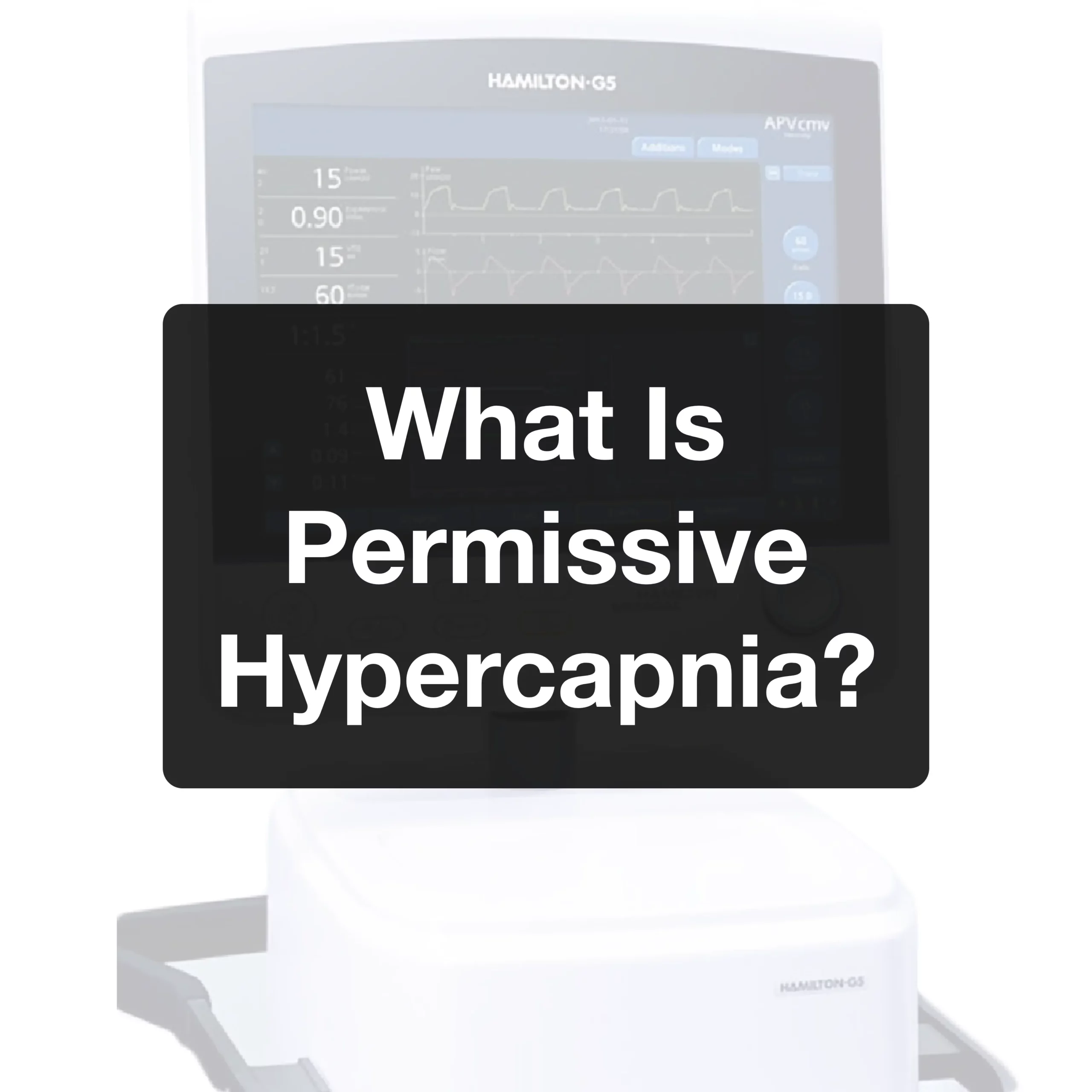Permissive hypercapnia (PHC) is a deliberate and controlled elevation in carbon dioxide (CO2) during mechanical ventilation to limit over-distention of the lung and ventilator-induced lung injury (VILI) by reducing inspiratory pressures. This can often lead to a PaCO2 of 50-80 mmHg depending on the patient and situational factors with acute respiratory acidemia. Increased PaCO2 causes vasodilation and a rightward shift of the oxyhemoglobin dissociation curve, promoting the release of oxygen from hemoglobin at the tissue level.
Clinically, I’ve utilized this technique in situations where I’m concerned about hyperinflation (e.g., status asthmaticus and COPD exacerbations that end up on the vent) and in acute respiratory distress syndrome when poor lung compliance makes delivering adequate minute ventilation difficult due to pressure-related injury. With that said, I’ve found the data to be largely lacking regarding the isolated benefits of hypercapnia or acidemia due to confounding goals (e.g., low tidal volume ventilation). Furthermore, hypercapnia-induced NF-κB pathway suppression might also account for various adverse outcomes, such as delayed healing of epithelial wounds and reduced bacterial eradication.
Blood gases and other labs are essential to determine PaCO2 with evolving lung pathology, the degree of compensatory buffering (e.g., retention/creation of bicarbonate), electrolyte derangements, etc. Patients with significant neurological or cardiopulmonary disease might not be great candidates for PHC either due to sympathetic hyperactivity, vascular steal, depressed consciousness, and worsening of right heart function.
Have you seen PHC utilized? Drop me a comment with your thoughts!






